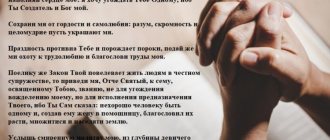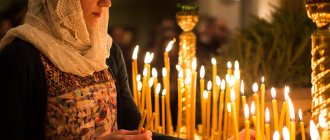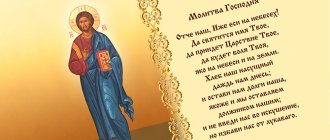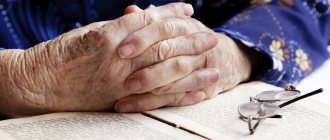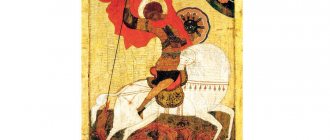Nowadays, miracles arising from religious shrines are subject to comprehensive study. Myrrh and blood are studied by mass spectrometric analysis, the phenomenon of holy water has also been given some kind of scientific explanation... But how to explain the miracles that happen from touching holy relics or a miraculous icon? There is no evidence other than the testimony of the benefited person himself, but how many people believe such stories? Those who doubt will continue to doubt, those who are indifferent will remain indifferent, but someone, perhaps, will sigh from the depths of their hearts and offer their prayers to the saint. And who knows, maybe a miracle will descend on him...
Brief Life
Read the main article about the life of St. Luke of Crimea.
Brief biography of Valentin Voino-Yasenetsky
The future Archbishop Luka (in the world Valentin Feliksovich Voino-Yasenetsky) was born on April 27, 1877 in a large family in Kerch. His father was a pharmacist who professed Catholicism, but was quite peaceful towards the Orthodox views reigning among his household.
Interesting fact
From an early age, Valentin gravitated towards painting, even studied for several years in Munich to become an artist, but suddenly suddenly changed his hobbies.
“A short hesitation ended in the decision that I do not have the right to do what I like, but I am obliged to do what is useful for suffering people,” this is how the young man explained his admission to the Faculty of Medicine at Kyiv University.
Valentin Voino-Yasenetsky
The studies went brilliantly. Students and teachers unanimously predicted a scientific career and a career as a professor for him. However, Valentin surprised everyone here: he expressed a desire to work as a simple zemstvo doctor.
Later in his memoirs, Saint Luke will write:
“I was offended that they did not understand me at all, because I studied medicine with the sole purpose of being a village, peasant doctor all my life, helping poor people.”
The feat of life of a holy doctor
Immediately after university, the young practitioner had the opportunity to take part in the Russo-Japanese War - as the head of surgery at a military hospital in Chita. Here Valentin met his future wife, sister of mercy Anna Vasilievna Lanskaya. She was a person of excellent spiritual qualities, but terribly jealous. Still, their marriage turned out to be successful. The couple lived together for 15 years, giving birth to four children.
Anna Vasilievna Voino-Yasenetskaya (Lanskaya), wife of the future saint
In those years, the Voino-Yasenetsky family often wandered from place to place - Valentin embodied the dream of serving people as a “village” doctor. In the Kursk province, a young doctor, in a sense, became a victim of his own brilliant talents. Having heard about a brilliant surgeon who restored sight to the blind and made the crippled able to work again, people flocked to him not only from other districts, but also from the neighboring province. They had to operate from nine in the morning until the evening, and often the hospital did not have enough beds, and the merciful doctor accommodated patients in his own home.
Useful materials
In 1909, Voino-Yasenetsky received the position of chief physician in Pereyaslavl-Zalessky. Despite the fact that the hospital was located in the city center and not in the middle of nowhere, it was not supplied with electricity or running water. Under these unimaginable conditions, the surgeon managed to perform more than a thousand inpatient and outpatient operations per year. When the First World War began, the hospital partly turned into a military hospital: soldiers with amputations lay in the beds and nearby civilians with hernias, appendicitis and purulent fractures. At this time, Voino-Yasenetsky found his experience in performing surgical interventions under local anesthesia useful.
While still in the Kursk province, the surgeon began working on a dissertation on so-called regional anesthesia, the idea of which found a lively response among his colleagues. In those years, general anesthesia often caused the death of a patient lying under the surgeon’s knife, and therefore there was an urgent need to improve anesthesia techniques. The method developed by Voino-Yasenetsky minimized the effects of anesthesia, but required precision - with this type of anesthesia, injections are given in strictly defined areas of the body - along the nerve trunks. Later, for the development of new technology in the field of anesthesia, the archbishop will receive the degree of Candidate of Medical Sciences, and for the book published on this topic he will be awarded a prize from the University of Warsaw.
Saint Luke (left) in the operating room
Meanwhile, Valentin Feliksovich’s personal life was overshadowed by his wife’s illness. The surgeon diagnosed his wife with pulmonary tuberculosis and jumped at the opportunity to move to Tashkent. He hoped that climate change would slow down the development of the disease. Alas, this did not happen, and two years later, in 1919, Anna Vasilievna Voino-Yasenetskaya died. After her death, the future archbishop immersed himself even more in his work. Combining the position of chief administrator of a city hospital and head of the medical department of Tashkent University, Valentin Feliksovich took an active part in church congresses and meetings. Once during such a congress, an event occurred that radically changed the life of a talented surgeon. After another heated speech about the fate of the Orthodox Church, Bishop Innocent approached the surgeon and said: “Doctor, you need to be a priest!” To this Voino-Yasenetsky responded unexpectedly and simply: “Okay, Vladyko! I will be a priest if it pleases God!”
"I fell in love with suffering..."
After the first arrest. On May 6, 1930, Vladyka was arrested and on May 15, 1931, after a year in prison, he was sentenced (without trial); exile for three years in Arkhangelsk
This is the name of the autobiography of St. Luke. During his life, from his monastic tonsure to his death, he suffered a lot of physical and mental torment. Arrests, three exiles - a total of 11 years in prisons and camps. The most severe sanction is exile to the Arctic Circle. This was truly a severe test of the priest's faith. At some point, when the repression by the authorities finally stopped, Bishop Luke asked to retire. He wanted to engage exclusively in medical practice. He stopped serving in the church, began to wear civilian clothes, and even received a position as a consultant in one of the hospitals in Uzbekistan... From then on, his brilliant surgeon’s hand, which knew no mistakes, began to tremble.
He moved from place to place, operations were unsuccessful, it seemed that God's grace had abandoned him. One day the saint had a terrible dream.
“I dreamed that I was in a small empty church, in which only the altar was brightly lit. In the church, not far from the altar, against the wall there is a shrine of some saint, covered with a heavy wooden lid. In the altar, a wide board is placed on the throne, and on it lies a naked human corpse. On the sides and behind the throne stand students and doctors smoking cigarettes, and I lecture them on anatomy on a corpse. Suddenly I flinch from a heavy knock and, turning around, I see that the lid has fallen from the saint’s shrine, he sat down in the coffin and, turning, looks at me with a silent reproach... I woke up with horror..."
Subsequently, Bishop Luke combined church ministry with work in hospitals.
26
May
1946
By decree of the patriarch, Saint Luke was appointed archbishop of Simferopol and Crimea. It was in Simferopol that the last years of the surgeon and priest passed.
Saint Luke ended his earthly journey on June 11, 1961. In 1995 he was canonized as a locally revered saint, and in 2000 he was canonized among the host of new martyrs and confessors of Russia. The relics of the saint are located in the Holy Trinity Convent of the city of Simferopol.
History No. 2, 2009
In reanimation.
At the end of June 2009, 24-year-old Elena K. from the island of Leros underwent surgery to replace a heart valve. The doctor said that after the operation the patient would be in intensive care for two days. However, after this period, the girl did not return to normal, “did not wake up.” She was in this state for 27 days.
A friend of the family, having learned about what had happened, sent the girl’s parents a book with a biography of St. Luke, the text of a prayer service to St. Luke and oil from his relics from Simferopol. The parents began to pray to Saint Luke. Two days later, the patient finally opened her eyes and began to speak. Everyone joyfully thanked the Lord and Saint Luke for their help.
Meanwhile, the nurses from the intensive care unit said the following.
During the next duty, the day before the patient “awakened,” a strange doctor appeared in the department, dressed in an old-style white long robe made of thick fabric. Without saying a word, he walked past the attendants into a separate block where the patient was. The strange doctor closed the door tightly behind him and drew the curtains of the glass partition. After a while, he appeared at the door again, silently walked past and left the department.
The nurses hurried to the patient’s block and... saw her awake and reacting absolutely adequately to those around her.
Healings through the prayers of the saint today
The Holy Trinity Cathedral, better known among the local population as “that temple in the center with the blue domes,” is quiet and deserted. Neither crowds of pilgrims wanting to venerate the holy relics of Luke of Crimea, nor any special excitement around his icon. The shrine of the confessor is in its place, to the left of the Royal Doors. It is decorated with silver - a gift from the Greek Orthodox Church and evidence that the saint is revered and loved throughout the Orthodox world. The church is crowded only on Sundays and holidays; it is all the more surprising how many miracles occur that were performed through the prayers of the saint and happened to residents of different countries.
Holy Trinity Cathedral. Simferopol
Nazar's grown fingers
This story happened in 2001. Nazar Stadnichenko was then in the fifth grade of a music school and already knew for sure that he wanted to enter the Conservatory and become a pianist. Once in Feodosia, where he was visiting his grandmother, the boy accidentally hit his hand on the door. The iron lock completely crushed the phalanges of two fingers - only bleeding stumps remained from them. There was nothing to sew on, and the surgeon simply sutured what was left of the fingers. For the boy and his family, the misfortune was a real blow. Later in the interview, Nazar admits that his first thought was: “How will I play the piano?” The pain in the crippled hand was terrible, and the boy’s mother, on the advice of one woman, took her son to Simferopol, to the relics of St. Luke. They bought oil infused with the relics and anointed Nazar’s fingers. On the third dressing, the boy’s doctor said in surprise:
“I don’t know and can’t understand what it is, but his bone begins to grow, a nail appears. If the nail phalanx remained, the nail could grow, but the bone cannot grow.”
Incredibly, after three weeks Nazar grew new fingers! And without any flaw! Less than a year later, the boy took second place in the “North Sea Undertakings” piano competition. The winner's diploma, medical certificates and a photograph of Nazar, in which he holds the icon with his healed hand, are kept in the Holy Trinity Convent as a sign of the greatest miracle performed at the intercession of St. Luke.
"Post-mortem operations" of St. Luke
Since during his lifetime the archbishop became famous as a talented surgeon, people who are about to undergo surgery often resort to his help and prayers. Sometimes Saint Luke is “present” at operations personally.
Polyxena P. from Nicosia, in Cyprus, always honored the memory of the Crimean saint. She prayed to him on the eve of the operation - she had to remove a polyp in her nose. Already lying on the surgeon’s table, the woman noticed that there was no doctor among those present. When asked where he was, she was told that the doctor’s mother had died. Already partially immersed in anesthesia, Polixena experienced terrible anxiety: how to trust someone unfamiliar? Yes, here is a stranger - a beard with a shovel. Just like the beloved Luke of Crimea on the icons. For some reason this circumstance calmed the woman, and she fell asleep. Waking up from anesthesia, Polixena instantly remembered the bearded doctor and began to torture the medical staff: who performed the operation? But I was able to see the doctor only after 15 days, when it was time to remove the stitches. Have you shaved? - Polixena asked first of all when the young exulap appeared before her eyes. The doctor was at first confused, and then laughed and replied that he had never worn a beard.
“Then I realized that St. Luke was with me in the operating room, I recognized him by his beard and thanked him with all my heart and glorified God.”
The appearance of a saint in a clinic
Even more incredible is the story that happened to a little resident of Athens. As it happens, the boy needed a high-tech operation that could not be performed at home. The parents were advised to go to Germany. Necessary means necessary. Together with the family, their spiritual shepherd, Father Nektarios, went to Germany, and especially prayed to St. Luke. Operation was successfully completed. However, German surgeons expressed bewilderment: why contact them if they themselves have such specialists. What are they?.. It turned out that an unknown elderly gentleman in an old-style medical gown and a long gray beard was present in the operating room. Throughout the entire operation, he gave valuable advice and instructions, amazing the German doctors with his professionalism. “Didn’t he come with you?” - they asked Father Nektary, noticing his puzzled look.
Having asked for the registration log, the priest saw that among the names of foreign specialists there was an inscription in Russian letters written in red felt-tip pen: “Archbishop Luka.”
The bone healed in a few days
The eight-year-old son of Nikolai A., a doctor from Veria, broke his arm. Very unfortunate. According to medical forecasts, he was expected to undergo surgery, long painful rehabilitation and, ultimately, disability. The bone, split along its entire length, was connected only by a tightly applied splint, but it could not completely immobilize the arm. The child suffered from severe acute pain. Nicholas and his wife were believers, and they learned about Saint Luke of Crimea from one of their friends. The whole family decided to go to Crimea, to the monastery where the relics of the saint resided. Since the boy had to undergo an emergency operation, they decided not to delay the trip. We flew to Simferopol and first of all went to the temple. While bowing, the boy suddenly felt some movement under the bandage. It seemed that something was moving there, as if someone had decided to restore order to the bones and muscles. As usual, the parents did not attach any importance to the boy’s words. However, upon returning to Greece, a shock awaited them: new X-rays showed no fracture! The doctors kept repeating only one thing: with such fractures, the bones do not recover on their own; they need to be held together with metal. But the fact was clear - treatment was no longer required.
Miraculous relief from severe disorders in cerebral palsy
Anna has cerebral palsy. With this diagnosis, they move with difficulty - on half-bent legs. In 1998, the girl stopped walking altogether. Anna's mother, Larisa, claims that this is the result of an ineptly applied plaster cast. The daughter’s “knees were very sore, they were hot and swollen,” Larisa said. And a week later, on x-rays, doctors saw loss of bone tissue - osteoporosis. The bone was collapsing, and to stop resorption, the girl was prescribed two intensive courses of therapy at the city children's hospital. The treatment was unsuccessful. Then Larisa decided to take the girl to a sanatorium in Evpatoria. There was little hope that Anna would undergo surgery on her leg muscles, and the girl would learn to move, at least with outside help. As a result of a new examination, doctors diagnosed subluxations of the hip joints. The mother’s grief knew no bounds, because in this case the girl was awaiting not a planned muscle operation, but a very complex bone operation and a year in a cast! On Palm Sunday, Larisa and her daughter took a bus to Simferopol. They knew that in the center of the city there was a temple in which the relics of St. Luke, who became famous during his lifetime as an excellent surgeon and diagnostician, rest. We ordered a prayer service, bought oil and prayed for a long time. On Monday, the mother insisted that the girl be taken again. No dislocations were found on them anymore. “Moreover, when the knees were x-rayed, it turned out that they were completely healthy! – Larisa exclaims. “You don’t have osteoporosis and, apparently, you never have,” the doctor told her confidently. And only the previous photographs proved the opposite”... The operation on the girl’s leg muscles was nevertheless carried out and quite successfully. Now Anna can walk again, but without bending her knees, on completely straight legs...
Having visited the Holy Trinity Convent and venerated the relics of St. Luke, Patriarch Kirill of Moscow and All Rus' said the following:
“He truly was a marvelous archpastor, combining service to the Church and service to science... It would seem that external circumstances suppressed him, but he never broke under this pressure and retained his inner strength, because this strength was in the Orthodox faith. He felt the presence of the Lord in his life and therefore was not afraid of anything, was not afraid of anything, did not shy away from anything, but courageously, with love for people and in peace, he carried out his archpastoral service. Today St. Luke is a great and bright example for many of us.”
A miracle is overcoming the usual physical laws. That's why it's so hard to believe in him. But it is precisely on faith, without seeking evidence, that religion is based, for the Savior said: “According to your faith, be it done to you.” And what is a miracle but an unpaid credit of trust in a saint of God? Of course, we can talk about the nature of a miracle for a long time, but why? It is better to once again turn to stories that testify that holy shepherds do not forget about their flock and, like St. Luke, invisibly do good among people, leaving very material evidence of their presence in this world.
Author: Galina Bocharova.
History No. 1, 2002
A priest who knows Russian and professes Russian emigrants living in Greece told his personal story:
“Due to compression of the spinal cord root by an intervertebral hernia between the 4th and 5th cervical vertebrae, the left arm stopped working, its muscles were atrophied, and the hand also had difficulty functioning. Neurologists and neurosurgeons who observed me advised me to undergo surgery. One of the doctors, however, advised me not to rush. As a diabetic, I was recommended to take sea baths, undergo physiotherapy and engage in physical therapy. In the fall, I became convinced that all my efforts to improve my health did not bring results.
I didn't go to the doctors anymore. I began to pray with faith to the holy doctor - Luke. Every evening an akathist was read to him in Russian. And Saint Luke answered my prayer.
At dawn on December 8, 2002, Saint Luke appeared to me in a dream in his bishop’s vestments. He was wearing a white doctor's robe over his robe, and on his head was a cap, which is usually worn by surgeons during an operation. In his left hand he held scissors and bandages, and in his right hand a scalpel. Saint Luke, addressing me, says:
“I was sent to you. I know how much you love Russians, how you help them spiritually here in Athens. Therefore, out of love for you, I will operate on you myself. Turn your back."
I turned around and in one second the operation was done. Again I hear the voice of Saint Luke:
“That’s it, you’re healthy now. Tomorrow you will be able to calmly raise your hand, and in three days I will come to you.”
A few minutes later I woke up.
It was 4:30 am. I got up, went to the mirror, began to move my hand up and down and realized that I was healthy! The arm was fully functional. There were no traces of atrophy left. What struck me most was the fact that drops of blood were visible on the T-shirt, right on the sore spot!
I glorified God and Saint Luke, the patron saint of my family!
After everything that happened, I decided to go to my doctor. The surprised doctor asked me what happened and how my health was restored so quickly. In response, I handed him a book about Saint Luke and said: “Doctor, read this book and then you will be able to understand what happened to me.”
I began to wait for Wednesday. After all, Saint Luke promised to visit me in three days.
On Wednesday I went to the temple and Mr. D.G. literally followed me into it. and handed me an icon of St. Luke with a particle of his relics! This icon now resides in our church!
Pereslavl-Zalessky
In 1910, the young family moved to the city of Pereslavl-Zalessky, where the future Saint Luke worked in extremely difficult conditions, performing several operations daily. Soon he decided to study purulent surgery and began to actively work on writing his dissertation.
In 1917, terrible upheavals began in the fatherland - political instability, widespread betrayal, the beginning of a bloody revolution. In addition, the young surgeon's wife falls ill with tuberculosis. The family moves to the city of Tashkent. Here Valentin Feliksovich holds the position of head of the surgical department of the local hospital. In 1918, Tashkent State University was opened, where the doctor teaches topographic anatomy and surgery.
Relics
When Luke's grave was opened, the incorruption of his remains was noted. In 2002, Greek clergy presented the Trinity Monastery with a silver shrine for the relics of the archbishop, in which they still rest today. The holy relics of Luke of Crimea, thanks to the prayers of believers, exude many miracles and healings. People come to the temple all the time to venerate them.
After Bishop Luke was glorified as a saint, his remains were transferred to the Cathedral of the Holy Trinity in the city of Simferopol. Pilgrims often also call this temple: “Church of St. Luke.” However, this wonderful one is called Holy Trinity. The cathedral is located at the address: Simferopol, st. Odesskaya, 12.
History No. 3, 2006
"I came to operate on you"
“On the afternoon of January 15, 2006, completely unexpectedly, my right ear began to hurt. One of my acquaintances, who greatly reveres St. Luke, gave me a book with his life. The first thing that came to my mind was to ask the saint to help me; in my heart I believed that he was a great saint. I put a piece of cotton wool in my ear, anointed my ear with oil from the lamp, put an icon of St. Luke on top and tied my head with a scarf.
My relative Mother A. and I began to think about whether I should go to the emergency hospital or not. In the end, I decided not to go anywhere. Although I understood that I would not be able to sleep due to the unbearable pain. However, I soon fell asleep. In a dream, Archbishop Luke himself appears to me in his bishop’s vestments. In his hands he had some kind of medical instrument that looked like a long needle. A.P. stood next to him. - that friend of mine who gave me a book about St. Luke. The saint tells me.
“I am Saint Luke and I have come to operate on you. Don’t be afraid, it won’t hurt you.”
And then he turns to my friend and says: “Watch how I now perform the operation.”
He put the phone in my ear. I felt a kind of puncture, but there was no pain. When I woke up in the morning, I realized that my ear did not hurt. The cotton wool in the ear was completely saturated with pus. I went to the ENT doctor Mr. A.G. for inspection. He confirmed that the eardrum had been punctured and diagnosed acute inflammation of the middle ear.
“My lady,” the ENT doctor asked in conclusion, “who operated on you? The surgeon who performed the surgery is truly a supreme master.” And I answered him: “Doctor, I see you have icons on your table, you are a believer, so I’ll tell you.” I told him about what happened at night, told him about Saint Luke and gave him a book with the life of the Saint and his icon. The doctor agreed with me. He prescribed antibiotics and added that it was fortunate that the pus had come out, otherwise you could have lost your hearing. A week later I went to the doctor again, and he told me that I was absolutely healthy. S.P. Athens."
Crimean period
Soon the saint's health seriously deteriorated, Bishop Luke began to see poorly. Church authorities appointed him Bishop of Simferopol and Crimea. In Crimea, the bishop continues his busy life. Work is underway to restore the churches; Luka receives patients for free every day. In 1956 the saint became completely blind. Despite such a serious illness, he selflessly worked for the good of the Church of Christ. On June 11, 1961, Saint Luke, Bishop of Crimea, peacefully departed to the Lord on the Day of the Feast of All Saints.
On March 20, 1996, the holy relics of Luke of Crimea were solemnly transferred to the Holy Trinity Cathedral in Simferopol. Nowadays, they are especially revered by the inhabitants of Crimea, as well as by all Orthodox Christians who ask for help from the great saint.
Tashkent
During the civil war, the surgeon lived in Tashkent, where he devoted all his energy to healing, performing several operations every day. While working, the future saint always fervently prayed to God for help in completing the work of saving human lives. There was always an icon in the operating room, and a lamp hung in front of it. The doctor had a pious custom: before an operation, he always venerated icons, then lit a lamp, said a prayer, and only then got down to business. The doctor was distinguished by deep faith and religiosity, which led him to the decision to accept the priesthood.
Health A.V. Voino-Yasenetskaya's life began to deteriorate - she died in 1918, leaving four small children in the care of her husband. After the death of his wife, the future saint began to participate even more actively in church life, visiting churches in Tashkent. In 1921, Valentin Feliksovich was ordained to the rank of deacon, and then to the rank of priest. Father Valentin became the rector of the church, in which he always very lively and diligently preached the Word of God. Many colleagues treated his religious beliefs with undisguised irony, believing that the scientific activity of a successful surgeon had finally ended with his ordination.
In 1923, Father Valentin took monastic vows with the new name Luke, and soon assumed the rank of bishop, which caused a stormy negative reaction from the Tashkent authorities. After some time, the saint was arrested and imprisoned. A long period of exile began.
